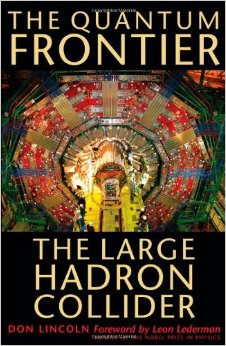Why do physicists need enormous machines, like the Large Hadron Collider (LHC) and gigantic viewing instruments (detectors) such as the Compact Muon Solenoid (CMS) to conduct their investgations of the sub-atomic world?
The size and position of an object tends to dictate what type of instrument is required to observe it. For example, what instruments would be helpful for the following backyard-observations: 1) a tree in your garden, 2) a small bird sitting on the highest branch of the tree, 3) the moon in the sky above the tree ? Your eye, a pair of binoculars, and a telescope would assist in the study of each of these items, respectively.

Now… there is an odd [inverse] relationship when people want to study very small objects : The smaller the object to be viewed, the larger the viewing instrument is. For example, to examine an ant, a virus, or an atom, a person would correspondingly need an optical microscope, an electron microscope, or a scanning tunneling microscope. To go further than this requires a particle accelerator, the first of which used energetic electron beams.
The following was written by Prof. Leon Lederman, winner of the Nobel Prize in Physics, and taken from the foreward of Don Lincoln's excellent book about the LHC: "The Quantum Frontier":
"These were invented in the 1930s and provided precise data on the size, shape and structure of atoms. To probe the nucleus of atoms, higher energies were required, and the acceleration of protons was added to the toolkit of physicists.
An approximate timetable of progress in accelerators may be useful and is shown below. Note that eV equals one electron volt, so keV is 103 electron volts and so on. You can see in the table that the higher the energy of the accelerated particle, the smaller the distance probed. However, to probe the very small, the accelerators also grew in size, complexity and cost. Accelerators are then in essence powerful microscopes, taking over when light is no longer sufficient."
| Date | Energy | Distance Probed |
|---|---|---|
|
1930
|
~100 keV
|
10-11 metres
|
|
1950
|
~100 MeV
|
10-14 metres
|
|
1970
|
~100 GeV
|
10-17 metres
|
|
1990
|
1 TeV
|
10-18 metres
|
|
2010
|
~10 TeV
|
10-19 metres
|
|
2030
|
?
|
?
|

